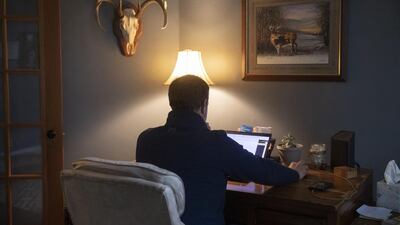The ability to work from home has, for many years, prompted a certain amount of envy. The stereotype of an average home-working day involves getting up late, frequent naps, half an eye on the telly, long lunches and knocking off early. It’s an understandable supposition to make; after all, our homes are generally more pleasant than our workplaces.
But Covid-19 has been chipping away at that stereotype. During the pandemic, those able to work from home have realised that the comforts and conveniences can come with drawbacks – the most unexpected of which being a longer working day.
In recent months, a rise in the use of cloud platforms (collaborative workspaces, messaging, videoconferencing) has generated a wealth of data about working patterns across the world. Many sources confirm that working from home means working later. This can distort work-life balance and, in extreme cases, lead to stress and burnout – in a setting that's supposed to be about relaxation and recuperation.
Tech companies began to notice the shift in late March. Service provider NordVPN analysed usage of its business platform and noticed that certain European countries were putting in as much as two extra working hours a day, and up to three in the US. The blurring of the line between work and domestic life meant employees logging in late at night, with new spikes of activity detected in the early hours of the morning.
These findings were echoed by a study done by Microsoft, published in July, showing that its employees’ working hours were lengthening by about four per week.
Earlier this month, software company Atlassian revealed data comparing usage in January and February with April and May; again, workdays were significantly longer. "Companies and employees need to adjust their practices to this new world," wrote Arik Friedman, the data scientist behind the Atlassian study. "We need to find effective ways of switching off, or risk burning out."
These findings come as no surprise for academics who have studied the impact of working from home. "I've interviewed across a range of organisations, private, public and voluntary, and they all come to the same conclusion," says Christine Grant, a researcher in the psychology of remote working and author of a new book, Agile Working and Well-Being in the Digital Age.
“Technology is favourable in that it’s accessible and allows flexibility, but it has to be self-managed, otherwise it can become detrimental, particularly for certain types of personality. It demands from you, it takes from you, and can result in cognitive weariness.”
In August, the World Economic Forum sat up and took notice. In a blog post, it highlighted a report by the US National Bureau of Economic Research, which showed that employees across North America, Europe and the Middle East, were sending more emails, attending more meetings and, on average, working 48 minutes longer every day.
Why? The act of leaving work premises – which usually signifies the end of that day – is absent and, Grant says, the technology facilitating remote working is hard to set aside. "We've become slightly invisible, and as a result, we can find ourselves working past normal hours without any kind of controls in place," she says.

“For some people, setting boundaries between home and work just isn’t possible. But at some point you need to pack your stuff up and say ‘work is finished’. You also have to ask yourself what’s most important? Yes, you might be highly productive, but should you be taking a more holistic view of your life?”
In some ways, it’s reflective of the adage that work expands to fill the time available, and those who find it difficult to set boundaries will inevitably see their hours lengthen. Last month, survey platform Blind showed that the majority of respondents from tech companies such as Amazon, Facebook, Intel and Google, reported a negative trend in work-life balance. Exacerbating this, says Grant, is the anxiety surrounding the economic fallout from Covid-19 and a fear of unemployment.
“People feel the need to work as hard as they can to show that they’re increasing productivity, and to feel worthwhile and valued.”
There is perhaps a parallel with presenteeism, where employees are reluctant to take time off sick because they don’t want it on their record. The onus, Grant believes, is on managers to understand that when people are ill, they are ill, and when the work day is over, it’s over. “[Setting boundaries] is up to the individual to some extent,” she says, “but organisations have a duty of care to their staff to make sure that they take sick leave, they take annual leave, they don’t overwork.” This, she believes, would help to avoid what she describes as a “well-being time bomb”.
The pandemic has, in effect, prompted a global experiment in remote working. The technology enabling it has created detailed data on how we use it, and very clearly shows that while some people are coping, others are clearly not.
“This is not a one-size-fits-all problem,” says Grant. “We all have different ambitions and different pressures. I’m really making the case for a more holistic view of the individual and their circumstances, and hoping that in future we’ll work in a more agile way. A way that takes account of the benefits of working from home, but also ameliorates some of its problems.”


